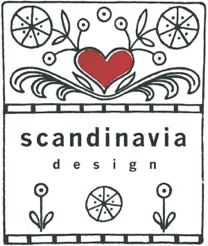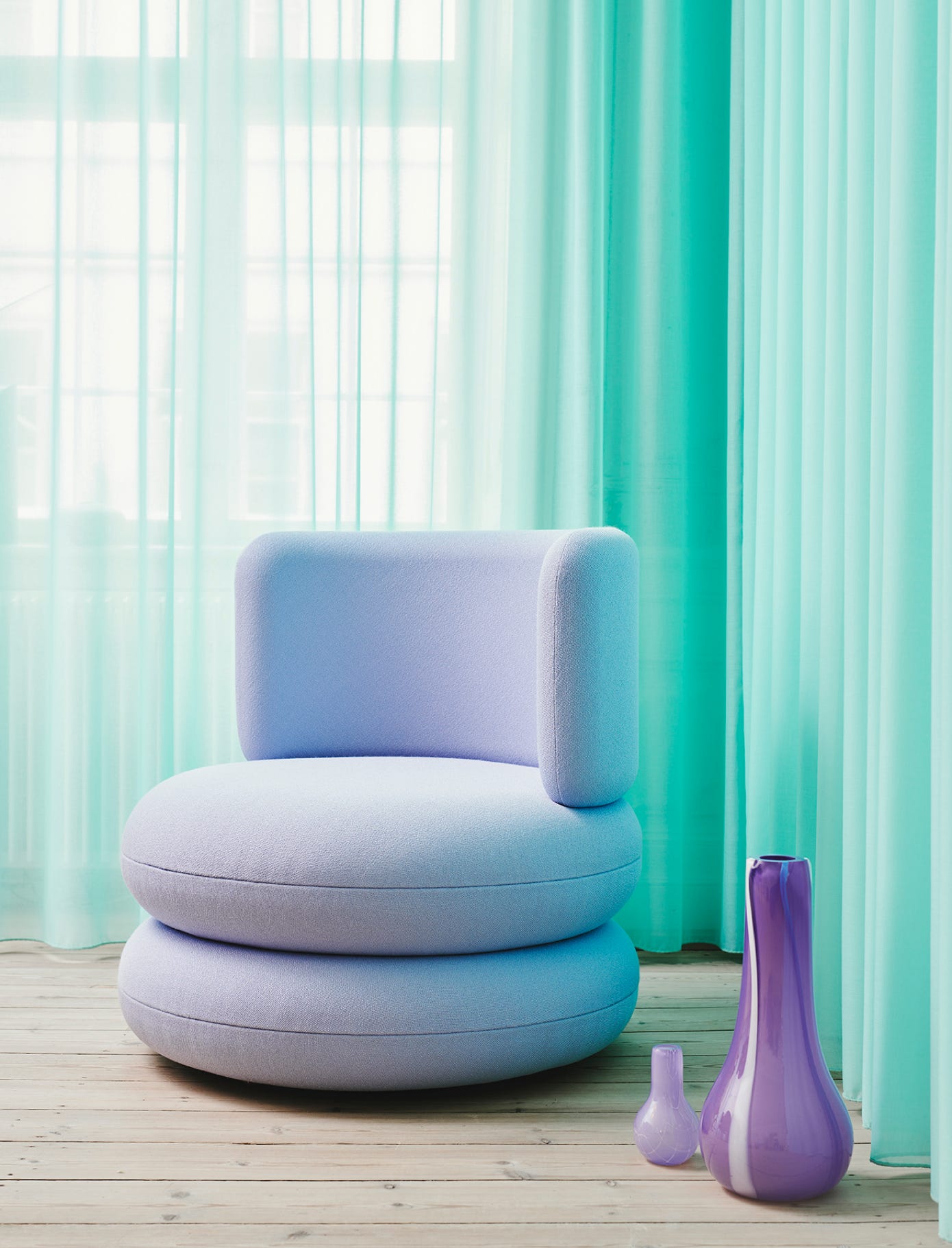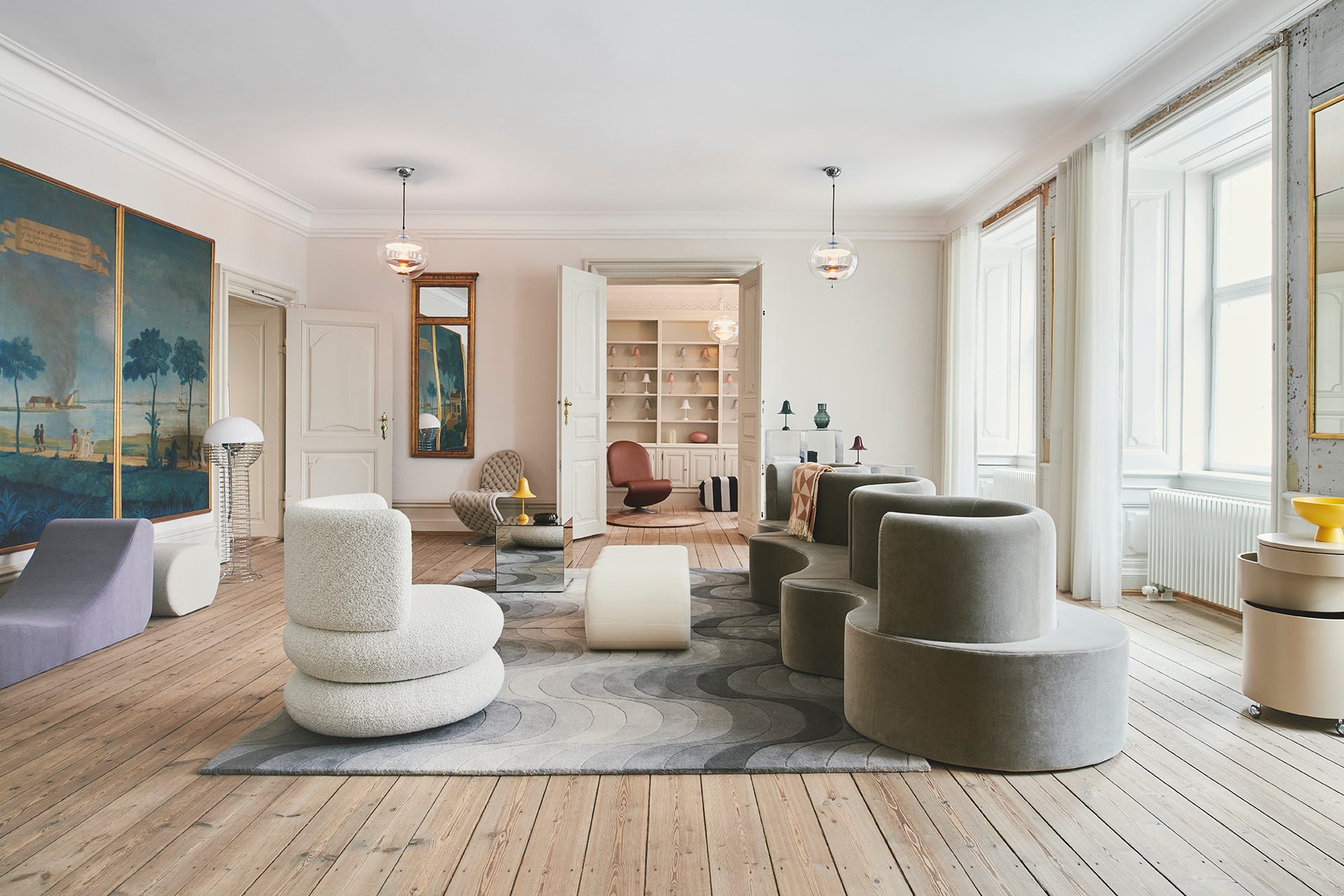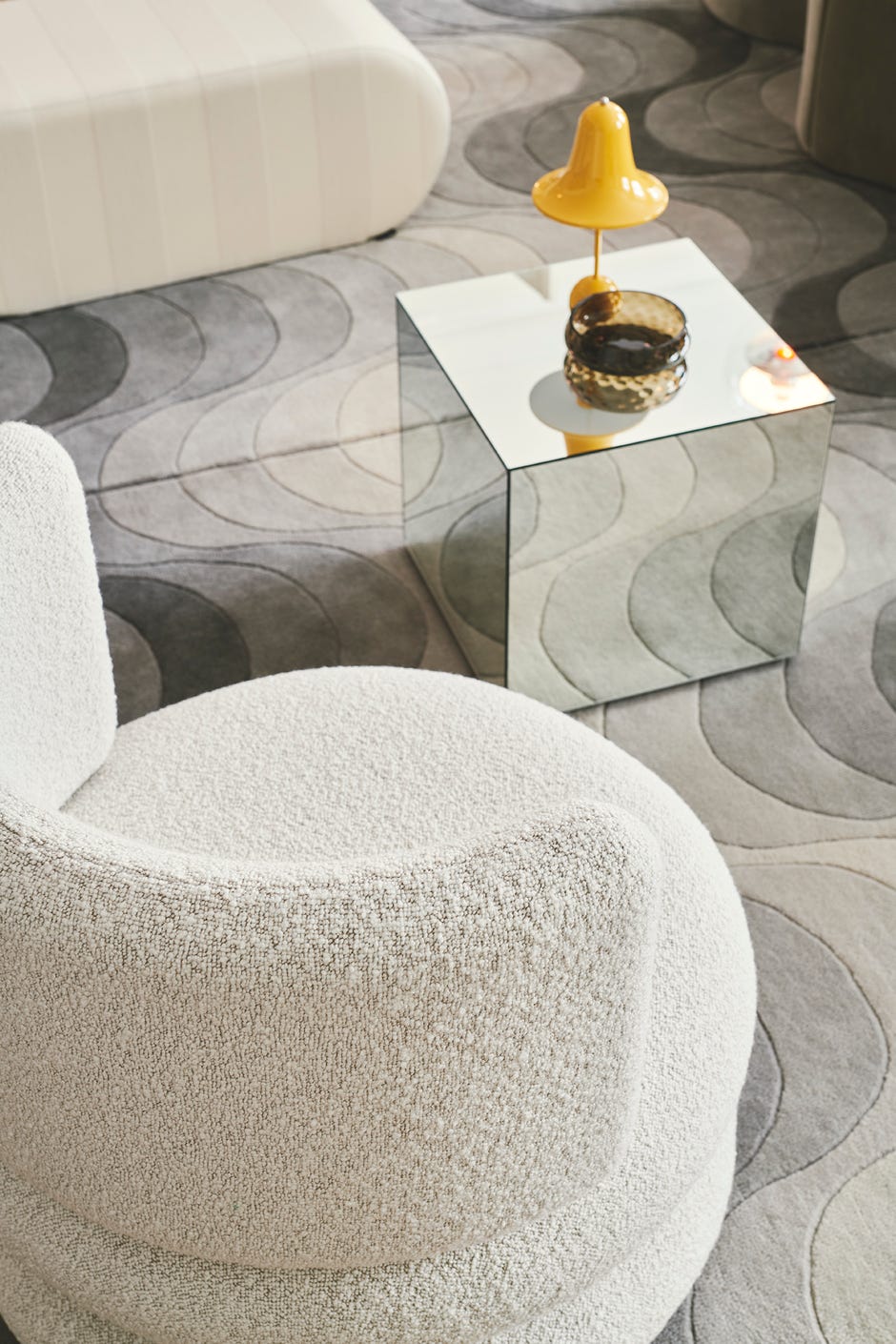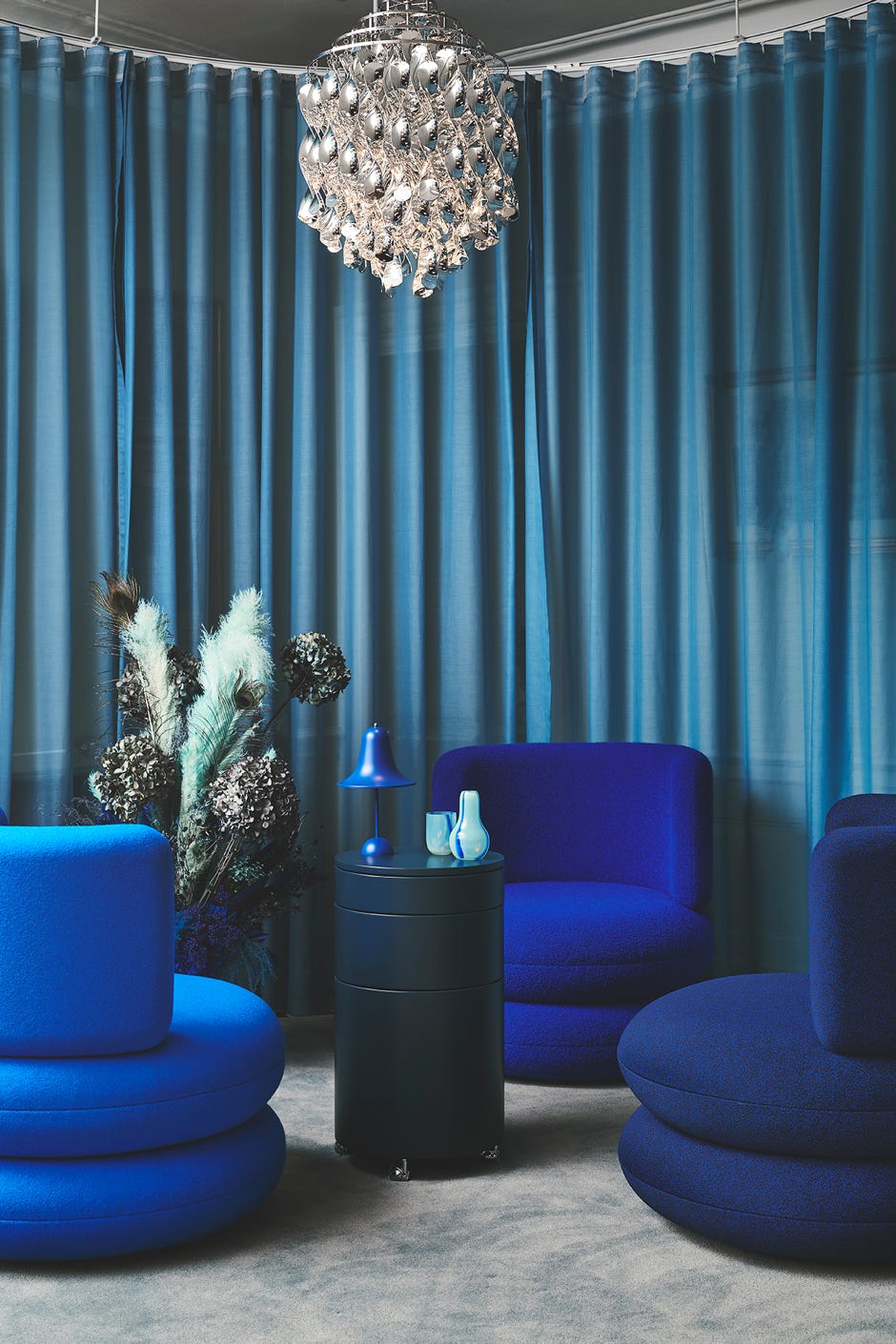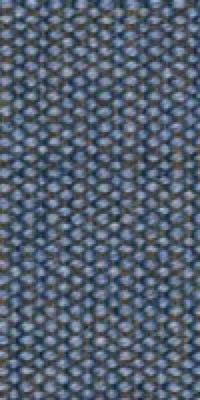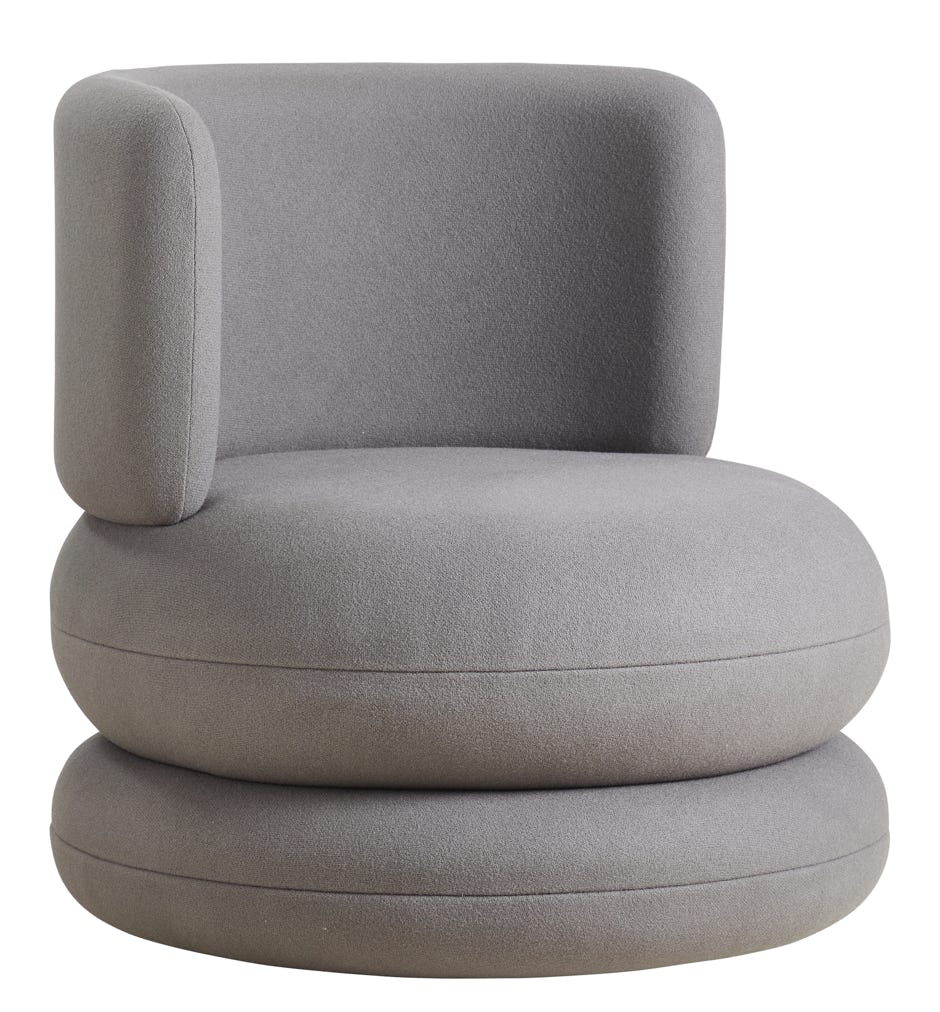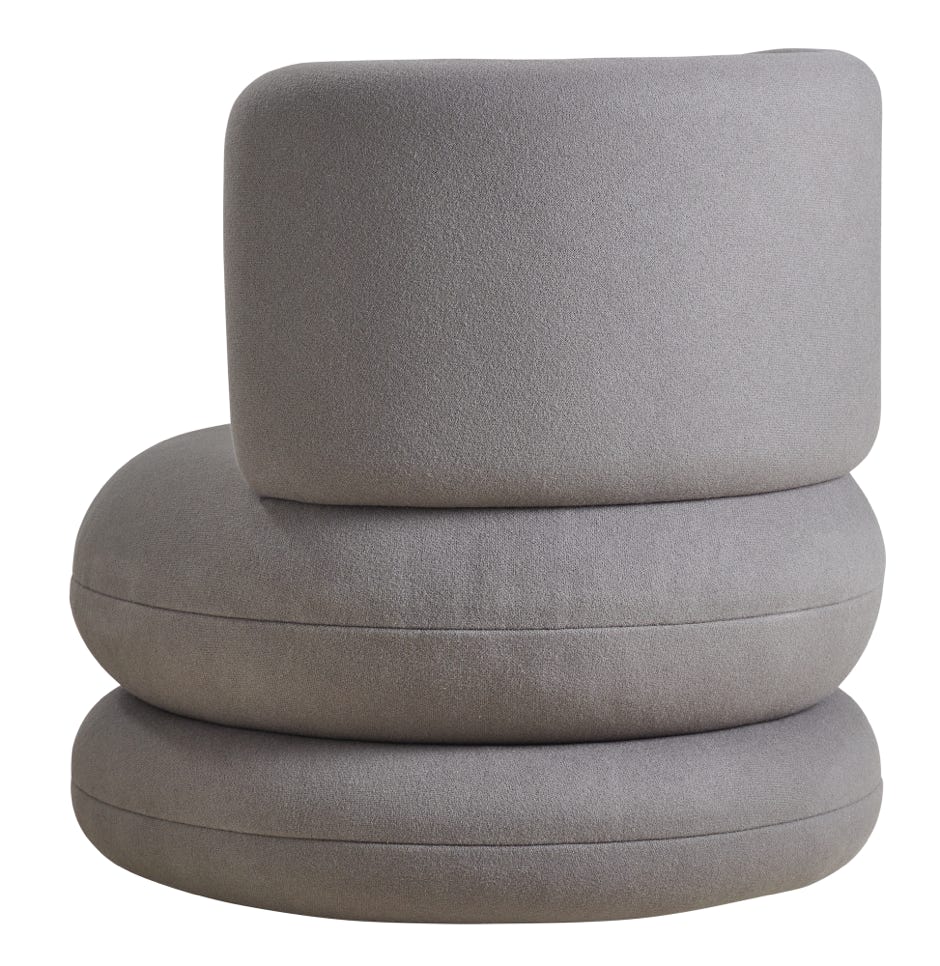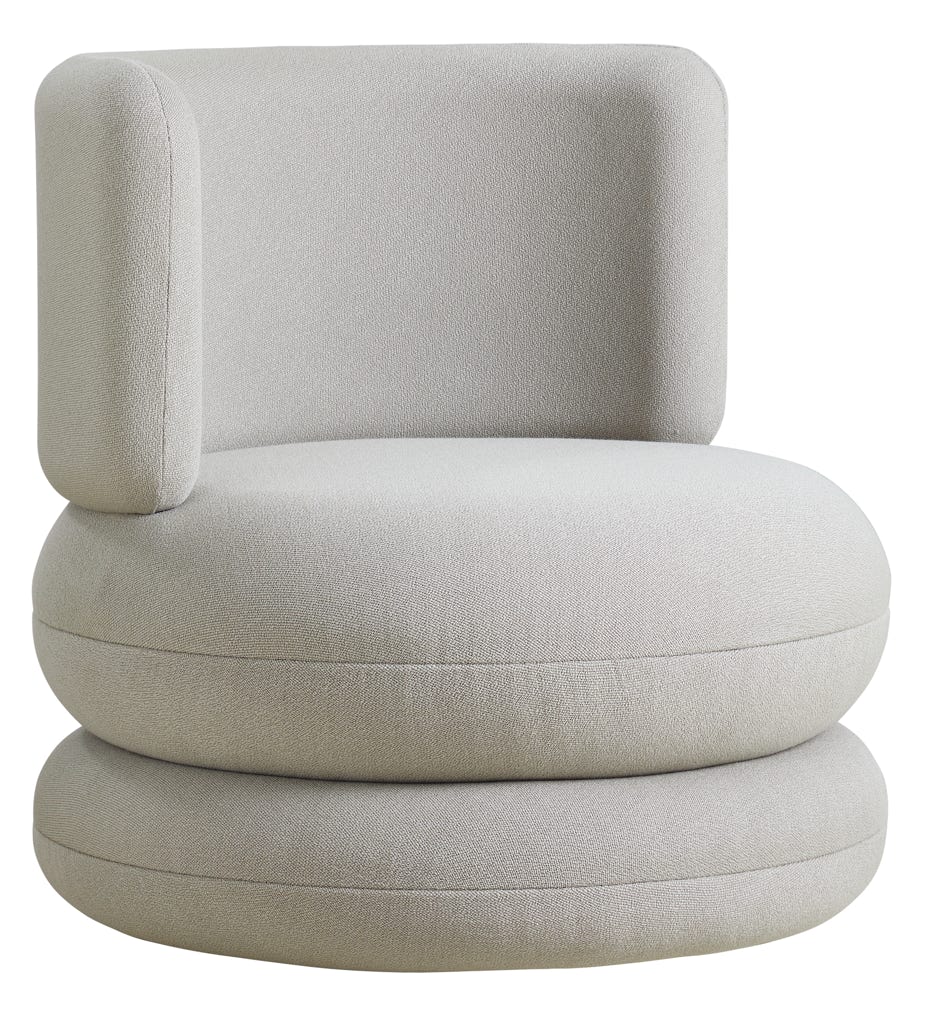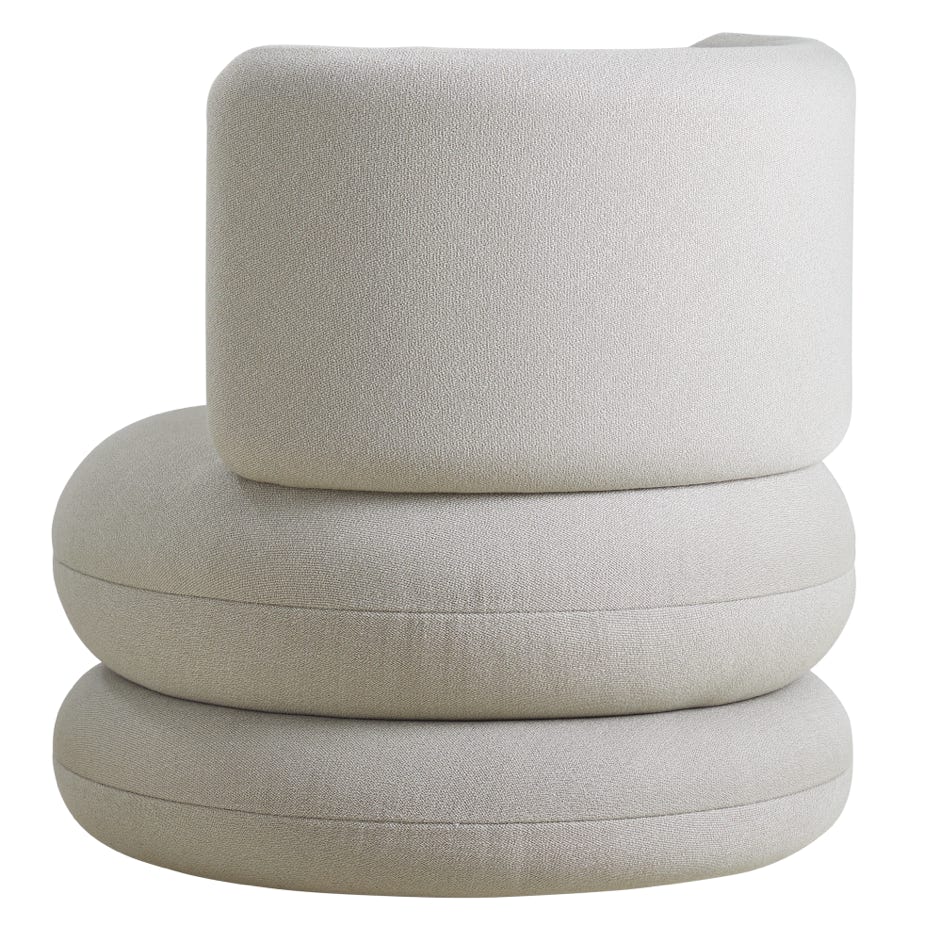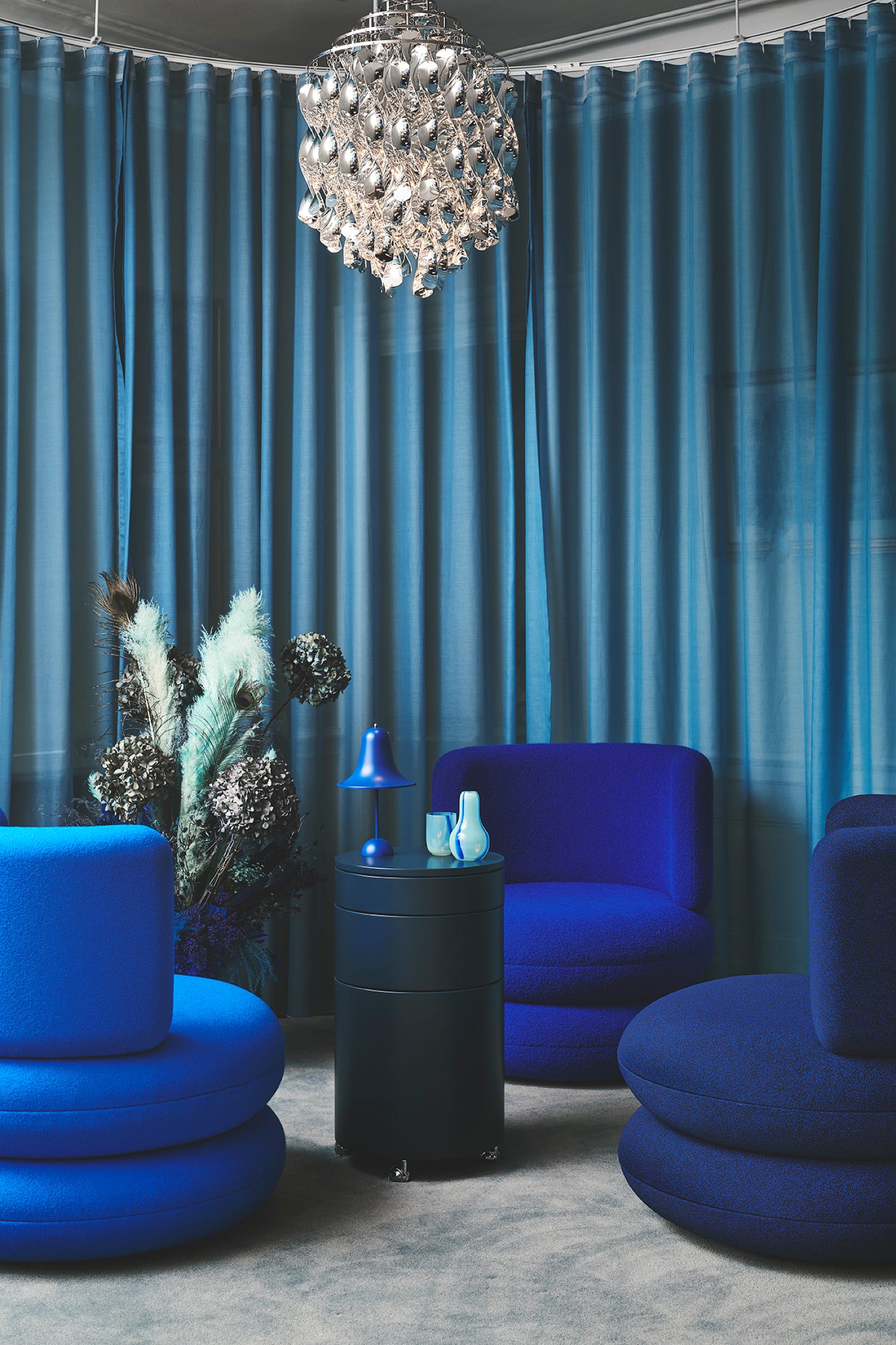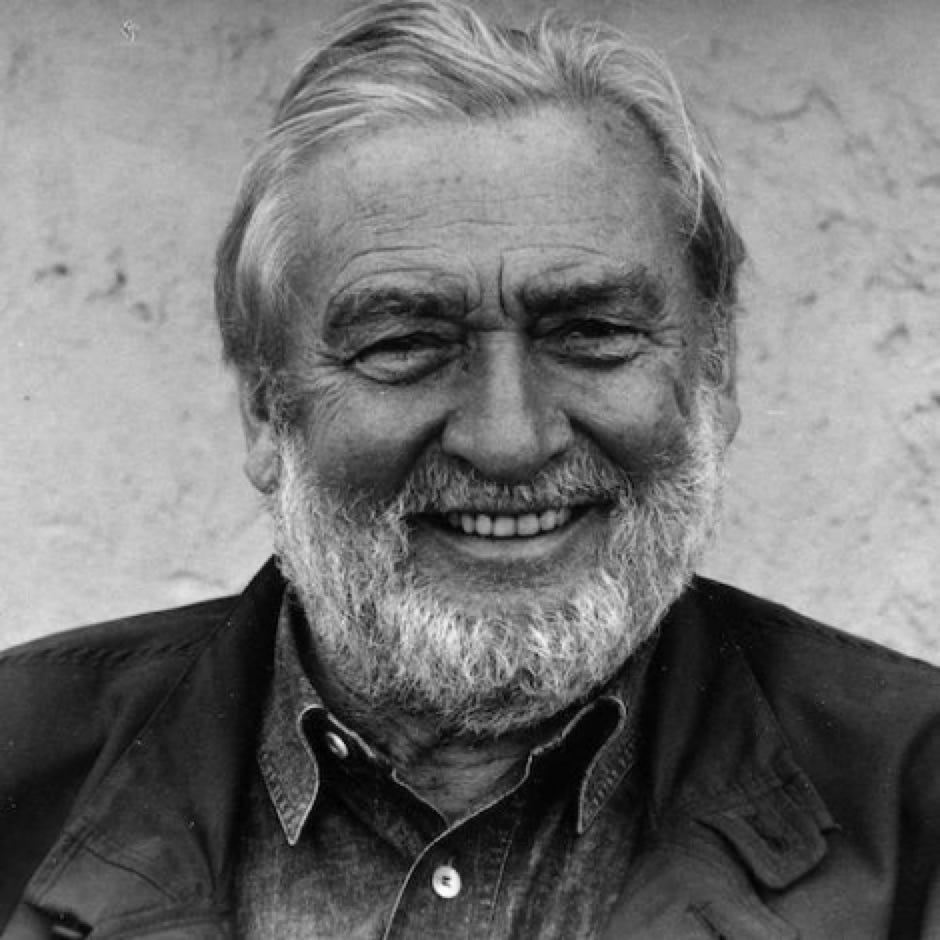The Easy Chair stands out as one of the most visually distinctive pieces from Verner Panton’s catalogue. With its soft round shapes, three-piece layered design and plush seating comfort, the imposing Easy Chair makes a strong impact in any setting – residential or professional.
The Easy Chair is a lounge chair that offers generous seating space and a large u-shaped enveloping backrest that doubles as armrest as you change your seating position.
The Easy Chair comes fully upholstered, making it possible to tone the design up or down depending on style and preference, allowing the chair to take on the character you want – or the space requires. Applying bold colours accentuates its figure and amplifies the audacity and playfulness of the design, while warm earthy tones softens the design and make a more subtle and elegant statement.
The Easy Chair was originally intended for public spaces, and it made quite a stir in the rather conservative 1960’s world of contract furniture with its bold expression and playful appearance. Despite of its initial positive reception, the chair never made it to series production and sat dormant in the archives until now when Verpan was granted permission to re-introduce it under license from the Panton Estate.
